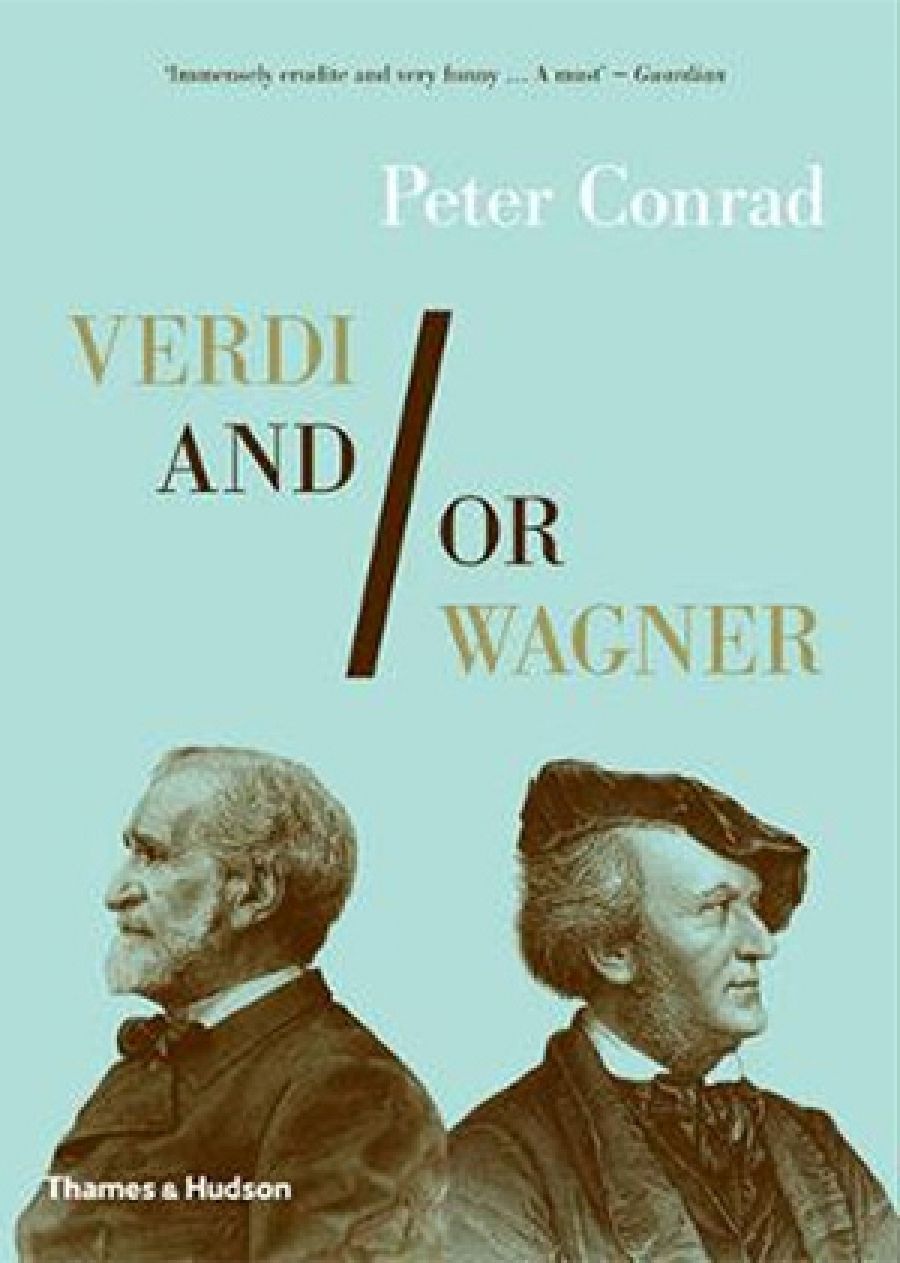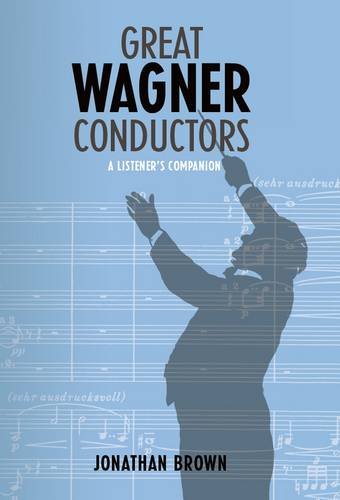
- Free Article: No
- Contents Category: Music
- Review Article: Yes
- Online Only: No
- Custom Highlight Text:
Two households. Two household names. Verdi and Wagner. To the north of the Alps, Haus Wahnfried, the Wagner compound in the otherwise unremarkable Bavarian town of Bayreuth. To the south of the Alps, Sant’Agata, the Verdi farmhouse outside Busseto, a marshy and little-visited corner of Emilia-Romagna. The respective residences reveal something of their owners’ personalities and priorities. For Giuseppe Verdi, Sant’Agata was a retreat; a place where he could escape from the hubbub of Milan, plant trees, grow vegetables, go fishing, tend livestock, and oversee his tenant farmers. For Richard Wagner, Wahnfried was headquarters of the greater Wagnerian project; a place to compose, write pamphlets, receive visitors, tend to his personality cult, and oversee his band of disciples.
- Book 1 Title: Verdi and/or Wagner
- Book 1 Subtitle: Two Men, Two Worlds, Two Centuries
- Book 1 Biblio: Thames & Hudson, $49.95 hb, 384 pp
- Book 2 Title: Great Wagner Conductors
- Book 2 Subtitle: A Listener’s Companion
- Book 2 Biblio: Parrot Press, $55 hb, 820 pp
- Book 2 Cover Small (400 x 600):

- Book 2 Cover (800 x 1200):

- Book 2 Cover Path (no longer required): images/1_SocialMedia/2021/Nov_2021/41QefliNMwL.jpg
Peter Conrad, in Verdi and/or Wagner, actually likens the interior of Wahnfried to an opera set. Wagner was writing operas while living the operatic life. As Conrad puts it, ‘For Wagner, composition was a performance, not a task.’ He would costume himself in fine silks, satins, and velvets – taking pleasure in the softness of the fabric against his bare skin – and sweeten the air with French perfume. Thus prepared, he was ready to enact his role as a composer. Wagner also lived opera in other ways: he liked to compare a terrifying sea journey he once took with the storm-tossed voyage of the Flying Dutchman; he named his three children – Isolde, Eva, and Siegfried – after characters from his operas; he himself assumed the names of characters from his operas in his correspondence with his patron, the young and impressionable Ludwig II of Bavaria; and, as revealed in the minutely detailed diaries of his second wife, Cosima, he prattled on endlessly about plot, character, motivation, and theme in his music dramas, and sought to draw parallels with them in his day-to-day life.
Verdi, who, like Wagner, was born in 1813, was infinitely less self-absorbed than his German contemporary, and had none of Wagner’s chutzpah. Yet in his own quiet way he tackled problems of music and drama in his theatrical works and transformed Italian opera in ways no less significant than Wagner’s transformation of German opera. He also wrote French opera, and in Don Carlos produced the finest French grand opera there is. But the grand scale is less important in Verdi than the intimate. ‘His music listens to the torments of human beings and attempts to harmonize their troubles,’ writes Conrad. Whether the setting be ancient Egypt, eighteenth-century Sweden, or Spain at the height of the Inquisition, Verdi’s operas play out at a human level. Love, jealousy, rivalry, honour, and duty are their basic elements. The dramatic realisation of these elements is generally larger than life – after all, that’s the whole point of opera – but, as examined by Conrad in his beautifully written and thoughtful book, we never lose sight of the fundamental humanity of the characters experiencing them.
Wagner’s characters, on the other hand, while frequently grappling with precisely the same passions and conundrums, are less believable as human beings (indeed, frequently they are not human beings at all, but are gods, demigods, or superheroes). We watch them and we hear them, but they are too remote to invite a connection with us as flesh-and-blood individuals. Which is not to say that Wagner doesn’t deliver a terrific experience in the theatre – far from it – but, as Conrad sees it, Wagner’s theatre is primarily one of ‘sensations’.
And sensational it was for untold listeners in the late nineteenth century. This was music that overwhelmed and consumed. For some it became an obsession. Wagner societies took root throughout Europe, including Bologna, not exactly on Verdi’s doorstep, but not too far away either. Devotees of Wagner were known as Wagnerites. Those who were especially devout referred to him as ‘the Master’. Wagner’s works begat Wagnerism, which in turn fed into and helped nurture the so-called ‘Decadent’ and ‘Symbolist’ movements in art and literature. Dorian Gray, not surprisingly, was enthralled by Tannhäuser. Aubrey Beardsley was another fan. Hanno Buddenbrook was undone by Lohengrin. More amusingly, the formidable Lady Bracknell was known to ring the doorbell in a ‘Wagnerian manner’. It’s a nice line and always gets a laugh. Wilde’s audience knew what to expect – a woman of Valkyrie-like bearing – before her ladyship even entered the room.
There was no such thing as Verdi-ism or a Verdi-ite. Verdi, not infrequently, was quizzed on Wagner and was asked to deliver his verdict on Wagner’s music. The Italian composer, like the rest of Europe, was expected to hold an opinion. But Wagner was never asked the same of Verdi.
Cosima Wagner, true to form, delivers one in any case in her diary entry of 12 February 1871:
In the evening Richter brings the conversation around to Gounod, and that sets us off on a dreadful musical tour, Faust, Le Prophète, Les Huguenots, Bellini, Donizetti, Rossini, Verdi, one after the other, I feel physically sick, I pick up and seek refuge in a volume of Goethe (Paralipomena zu ‘Faust’). But nothing helps, I suffer and suffer. It is too much for R. [Richard] as well, and he begs Richter to stop after the latter sought to prove to him that Verdi was no worse than Donizetti.
The ‘Richter’ referred to above is Hans Richter, a frequent visitor to the Wagner household and conductor of the Bayreuth Ring in 1876, the first performances of the four Ring operas as complete cycles. Richter is one of nearly two dozen conductors surveyed by Jonathan Brown in his bulky and splendidly illustrated tome, Great Wagner Conductors: A Listener’s Companion.
This painstakingly researched and fastidiously footnoted study is aimed at those with an interest not only in Wagner but at those with an interest in Wagner conductors, performances (but not productions), and recordings of yesteryear. Brown has excluded from consideration conductors born after 1900. So don’t go looking for information on Pierre Boulez, James Levine, or Christian Thielemann (or, indeed, Erich Leinsdorf, Herbert von Karajan, or Georg Solti, all of whom were born after the cut-off date).
As you would expect, Brown devotes a chapter to Arturo Toscanini, who was the first non-German to wield the baton at Bayreuth. In 1884 the seventeen-year-old Toscanini, who at that time was a cellist in the orchestra of the Teatro Regio, Parma, played in one of the first Italian performances of Lohengrin. A few years later at La Scala, he played at the première of Verdi’s Otello. Controversially, in 1898 Toscanini began his tenure as artistic director at the same opera house with a performance of Die Meistersinger von Nürnberg. Verdi and Wagner occupied him throughout his life. A man of strong convictions, he refused to conduct in Germany after Hitler came to power.
It is almost inevitable that discussions of Wagner will touch upon the composer’s legacy and the role of his music during the Third Reich. ‘Germans are troubled by Wagner because they feel disgraced by him,’ writes Conrad. ‘Italians are troubled by Verdi for a different reason: they feel unworthy of him.’ That may be so, but when Italians want to be reminded of their Italian-ness, Verdi is the man they go to. Only last year there was a concert performance of Nabucco on the floor of the House of Representatives in Rome. A complete opera played live in Parliament House! Meanwhile, on stage at Bayreuth the interior of the German Reichstag is mocked-up in the current production of Parsifal. A make-believe Reichstag is about as close as a Wagner opera is ever going to get to the real nerve centre of modern German democracy.
CONTENTS: JUNE 2012


Comments powered by CComment